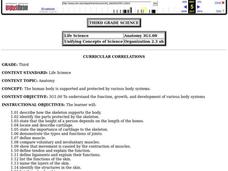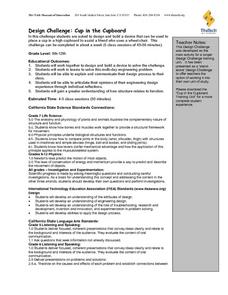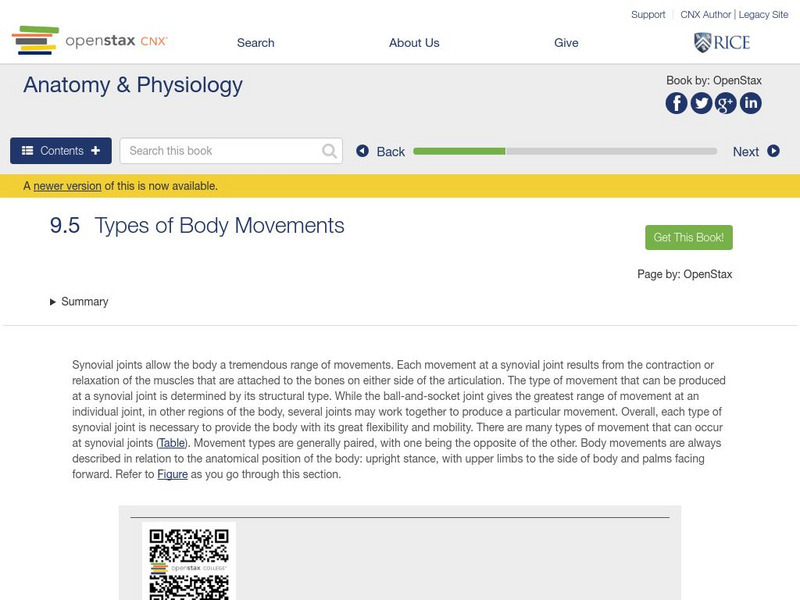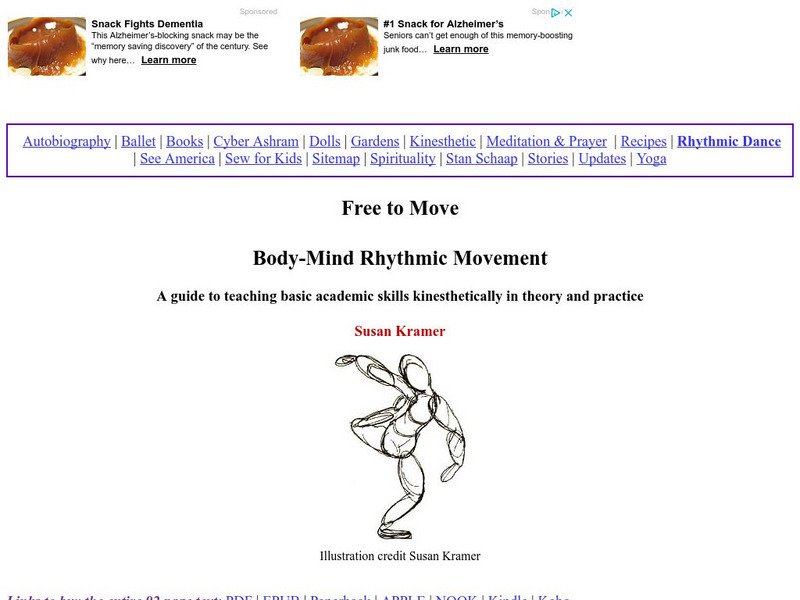Curated OER
Let's Learn about Fish
Students explore fish. In this aquatic life science lesson plan, students complete a KWL chart about fish, listen to What's it Like to be a Fish?, and observe a classroom aquarium or take a trip to a local aquarium. Students complete an...
Curated OER
Horses
Students study horses' anatomy and movements. They explore the work of Susan Rothenberg, then create a print of a horse in motion. They study photos of horses and observe horses trotting and in other gaits to see how their legs move and...
Curated OER
Skeletal System
Third graders describe and identify the parts of the skeleton and how they support the body. They observe two chicken bones that have been soaked in vinegar for 5 - 7 days. They observe the bone's appearance after it has been removed...
University of Arizona
The Leg Bone Is Connected to The...
Students discover the names of 13 major bones in the human skeletal system. They construct their skeleton using paper plates and other simple products. Links to templates are provided within the resource.
Curated OER
How Does Radon Affect Human Lungs?
Students identify the different parts of the respiratory system of the human body. They work together to complete an activity and worksheet about the effects of radon on the lungs. They research lung diseases if time permits.
Curated OER
Design Challenge: Cup in the Cupboard
Students design device that will place a cup into a cupboard for a physically challenged person. They study the engineering design and how structure relates to function.
Curated OER
Jumpy Dolls
Students are challenged to design and construct a jointed figure that moves in a motion something like jumping jacks when a string is pulled.
Curated OER
Worms Crawl In and Do Lots of Things
Students observe the aquatic segmented worm, Lumbriculus varigatus and the life processes. They explore the processes of nutririon, transport, regulation, locomotion, and removal of wastes.
OpenStax
Open Stax: Types of Body Movement
This site provides information regarding types of body movement. Movement types are generally paired, with one being the opposite of the other. Body movements are always described in relation to the anatomical position of the body:...
OpenStax
Open Stax: Anatomy & Physiology: Body Fluids and Fluid Compartments
Learn about the chemical and physical characteristics of the fluids that make up the human body.
OpenStax
Open Stax: Anatomy & Physiology: Skeletal System Functions
This site helps you understand the human skeletal system, a body system composed of bones and cartilage that performs critical functions for the human body.
Other
Susan Kramer: Body Mind Rhythmic Movement
Susan Kramer's online book is available as a free resource for teaching basic movements and dance skills. The text is broken down into seven sections. You can access information on anatomy, rhythms, creative movements, rhythmic...
HotChalk
Hot Chalk: Lesson Plans Page: Billie Bird Learning About a Bird's Body
This activity is designed to introduce young learners to the various parts of bird anatomy and to express that through creative movement, poetry, and drawings.
BBC
Bbc: Applied Anatomy and Physiology: Muscles and Movement
Learn what muscles are, how they are classified, and how they are attached to the body's skeletal system. This site contains several definitions, illustrations showing the parts of muscles, and a quiz to test your knowledge of muscles...
OpenStax
Open Stax: Functions of Human Life
The different organ systems each have different functions and therefore unique roles to perform in physiology. These many functions can be summarized in terms of a few that we might consider definitive of human life. Learn here about the...
National Cancer Institute at the National Institutes of Health
Seer Training Modules: Introduction to the Muscular System
Self-guided learning activity where students learn about the structure and function of the human muscular system. There is a short quiz at the end of the lesson to check for understanding.
TeachEngineering
Teach Engineering: Muscles, Oh My!
Students are introduced to how engineering closely relates to the field of biomechanics and how the muscular system produces human movement. They learn the importance of the muscular system in our daily lives, why it is important to be...
TeachEngineering
Teach Engineering: Polluted Air = Polluted Lungs
To gain a better understanding of the roles and functions of components of the human respiratory system and our need for clean air, students construct model lungs that include a diaphragm and chest cavity. They see how air moving in and...
TeachEngineering
Teach Engineering: Walk, Run, Jump!
In this activity, students participate in a series of timed relay races using their skeletal muscles. The compare the movement of skeletal muscle and relate how engineers help astronauts exercise skeletal muscles in space.
Khan Academy
Khan Academy: Raphael and His Drawings
Born in Urbino in 1483, Raphael trained with his father and then the Umbrian artist, Perugino. From 1504/5 he worked in Florence where he was much influenced by Michelangelo and Leonardo da Vinci, learning from their depictions of the...


















